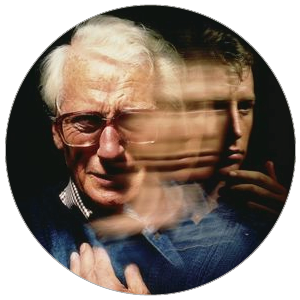RECOMMENDED READING
TURNING BACK TIME WITH EMERGING REJUVENATION STRATEGIES
Salah Mahmoudi, Lucy Xu & Anne Brunet
Strategies for turning back the aging clock have moved from the realm of science fiction to the lab in recent years. As these approaches become closer to reality, the first “target” will not likely be extension of life, but rather attacking age-related chronic diseases such as diabetes, Alzheimer’s, frailty, and heart disease. Rather than restricting ourselves to treating the symptoms of these maladies, we may be able to target reversal of the aging process at the cellular level, delaying the onset or reversing symptoms by making the affected cells “younger.”
Center on Longevity Faculty Affiliate Dr. Anne Brunet and her co-authors summarize the four primary approaches to cell rejuvenation currently under development in the paper “Turning back time with emerging rejuvenation strategies”, published in the January 2019 issue of Nature Cell Biology. The paper is remarkable for its clear presentation of the research directions under study:
- It’s something in the blood: Researchers, including Center on Longevity Deputy Director Dr. Tom Rando, have shown through a technique known as “parabiosis” that when old tissues are exposed to young blood, the cells of these tissues begin to behave like younger cells. Researchers are now searching for factors in the blood that could be identified as potential anti-aging drugs.
- It’s something in your diet: Research in mice and other mammals has shown that long-term dietary restriction to low calorie levels holds the potential to extend life span. This “metabolic pathway” has led researchers to study ways in which the effect of restricted diet can be mimicked with controlled diet regimes or drugs, as long term restriction is very difficult to implement in practice.
- It’s about controlling senescent cells: As the normal wear and tear of aging accumulates, some cells become senescent,meaning they no longer divide and reproduce. It is believed that accumulation of these cells contributes to aging. Several drugs have been identified that target senescent cells, but it is not simply a matter of eliminating all of them, as they play positive roles in other processes, such as wound healing and tumor prevention.
- It’s in the genes – The final line of research targets the possibility of re-programming cells to their youthful state by gene manipulation, directly “setting back the clock”. As in the other approaches, understanding the mechanisms by which this could work is critical, as all the full range of consequences is not known.
The paper goes on to describe mechanisms which may be critical in all of these approaches, as well as finishing with some suggestions on where research could go in the future. While clearly written for an academic audience, the paper provides one of the best overviews of the anti-aging field available, as well as an extensive list of citations for those wanting to dig deeper.
 This article was recommended by Ken Smith, Senior Research Scholar and Director of the Mobility Division at the Stanford Center on Longevity.
This article was recommended by Ken Smith, Senior Research Scholar and Director of the Mobility Division at the Stanford Center on Longevity.

